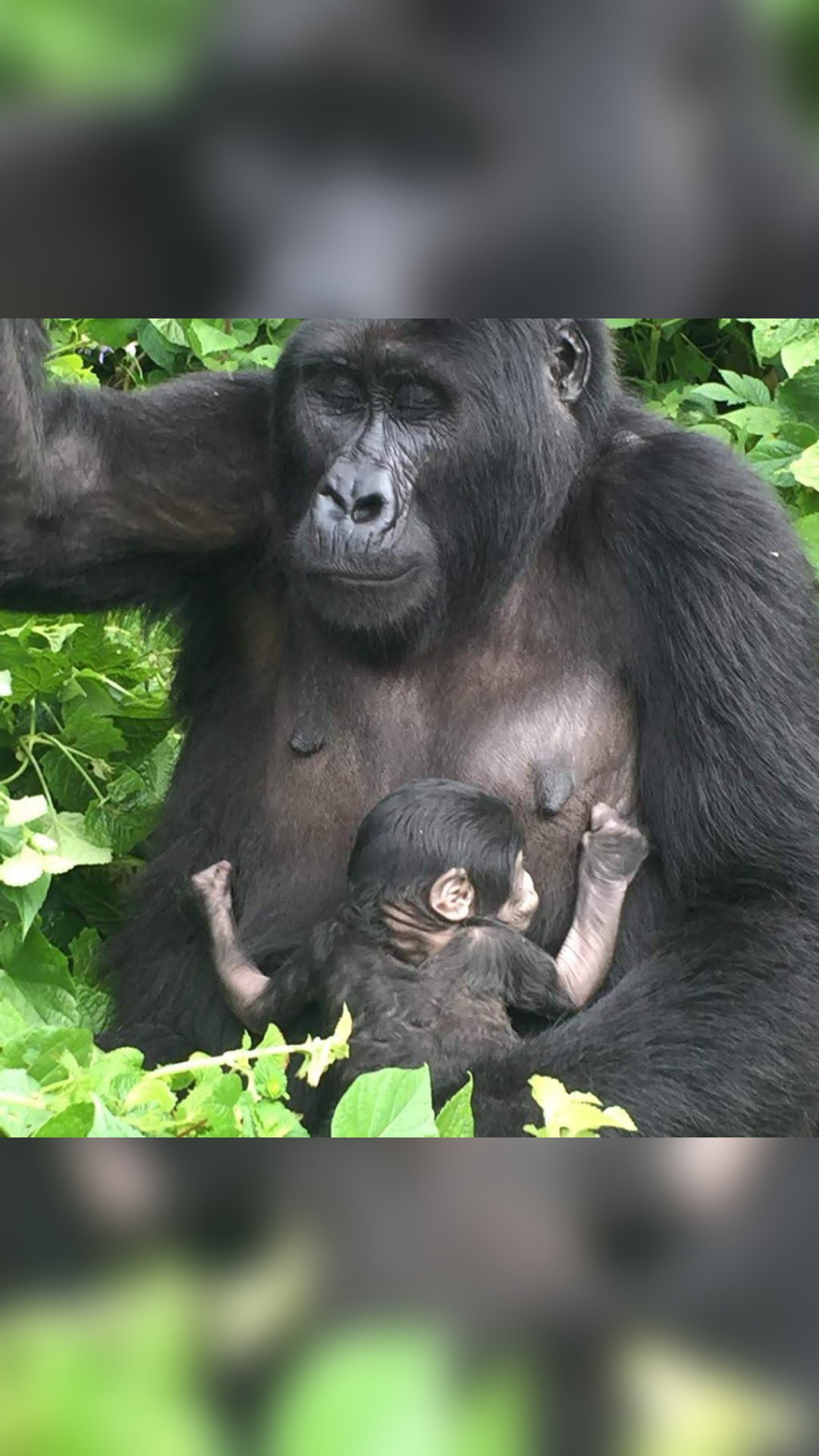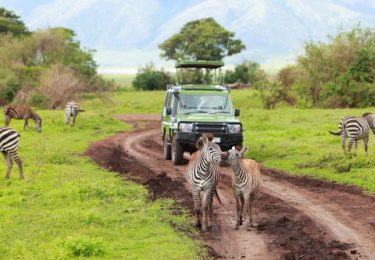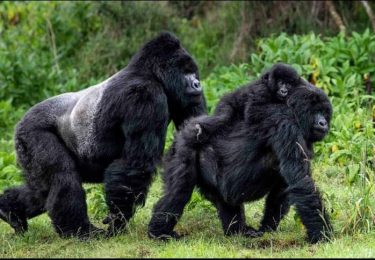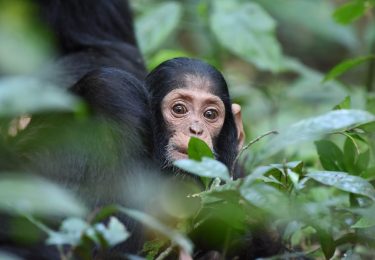- Home
- About Us
- Uganda safaris
- Long Safaris
- Short Safaris
- Day Short Safaris
- 1 Day Entebbe Botanical gardens weekend birding excursion
- I Day Entebbe City Tour
- 1 Day Jinja, Mabira, Ssezibwa Tour
- 1 Day Jinja Source of the Nile tour
- Lake Victoria Sunset Cruises
- 1 Day Kampala City Tour
- 1 Day Mabamba Shoebill Stork And Birding Tour
- 1 Day Makanaga Shoebill And Birding Trip
- 1 Day Ngamba Island Boat And Chimpanzee Excursion
- Other Tours
- Gorilla Safaris
- Uganda Gorilla safaris
- 4 Days Mgahinga Bwindi gorilla and golden monkey trekking safari
- 3 Days Mgahinga Gorilla trekking safari
- 5 Days Mgahinga Gorillas, Golden Monkey And Lake Bunyonyi Tour
- 5 Days Gorillas And Wildlife, L.Mburo, Bwindi and L. Bunyonyi
- 8 Days Wildlife, Gorillas, Golden Monkeys Trip
- 8 Days Gorillas Chimpanzee and wildlife Trekking Tour
- 9 Days Kidepo Valley National park and Bwindi Gorilla Safari. Wildlife and gorillas
- 11 Days Gorilla And Chimpanzee Tracking and wildlife Safari
- Rwanda Gorilla Safaris
- Uganda Gorilla safaris
- National Parks
- Kidepo Safaris
- Queen Elizabath Safaris
- Lake Mburo Safaris
- Mgahinga
- Mgahinga Gorilla National Park
- 3 Days Mgahinga Gorilla trekking safari
- 4 Days Mgahinga Bwindi gorilla and golden monkey trekking safari
- 5 Days Rwand-Uganda Gorilla, Golden Monkey trekking trip
- 5 Days Mgahinga Gorillas, Golden Monkey And Lake Bunyonyi Tour
- 8 Days Wildlife, Gorillas, Golden Monkeys Trip
- Our Blog
- Other Safaris
- Home
- About Us
- Uganda safaris
- Long Safaris
- Short Safaris
- Day Short Safaris
- 1 Day Entebbe Botanical gardens weekend birding excursion
- I Day Entebbe City Tour
- 1 Day Jinja, Mabira, Ssezibwa Tour
- 1 Day Jinja Source of the Nile tour
- Lake Victoria Sunset Cruises
- 1 Day Kampala City Tour
- 1 Day Mabamba Shoebill Stork And Birding Tour
- 1 Day Makanaga Shoebill And Birding Trip
- 1 Day Ngamba Island Boat And Chimpanzee Excursion
- Other Tours
- Gorilla Safaris
- Uganda Gorilla safaris
- 4 Days Mgahinga Bwindi gorilla and golden monkey trekking safari
- 3 Days Mgahinga Gorilla trekking safari
- 5 Days Mgahinga Gorillas, Golden Monkey And Lake Bunyonyi Tour
- 5 Days Gorillas And Wildlife, L.Mburo, Bwindi and L. Bunyonyi
- 8 Days Wildlife, Gorillas, Golden Monkeys Trip
- 8 Days Gorillas Chimpanzee and wildlife Trekking Tour
- 9 Days Kidepo Valley National park and Bwindi Gorilla Safari. Wildlife and gorillas
- 11 Days Gorilla And Chimpanzee Tracking and wildlife Safari
- Rwanda Gorilla Safaris
- Uganda Gorilla safaris
- National Parks
- Kidepo Safaris
- Queen Elizabath Safaris
- Lake Mburo Safaris
- Mgahinga
- Mgahinga Gorilla National Park
- 3 Days Mgahinga Gorilla trekking safari
- 4 Days Mgahinga Bwindi gorilla and golden monkey trekking safari
- 5 Days Rwand-Uganda Gorilla, Golden Monkey trekking trip
- 5 Days Mgahinga Gorillas, Golden Monkey And Lake Bunyonyi Tour
- 8 Days Wildlife, Gorillas, Golden Monkeys Trip
- Our Blog
- Other Safaris
CHIMPANZEES

MOUNT RWENZORI NATIONAL PARK
January 23, 2024
MURCHISON FALLS NATIONAL PARK
January 23, 2024Chimpanzees are great apes who are native to the Africa continent. These endangered species used to live throughout equatorial Africa from Southern Senegal through Central Africa to Western Tanzania. But today, chimpanzees are estimated to be approximately 170,000-300,000 lefts in Africa, and their population is decreasing rapidly because these apes are being threatened with extinction making the population numbers disputed.
There are three species of chimpanzees distributed across the forest zone of Africa; the guinea chimpanzee found in western Tanzania and Uganda; the bonobo (Pan paniscus) chimpanzee found exclusively in central Democratic Republic of Congo. In East Africa, the chimpanzees are found in Uganda and Tanzania but only in captivity in Kenya. The first national park in Africa specifically created for chimpanzees is Gombe National Park in Tanzania where Dr. Goodall did her research from.
Chimps prefer dense tropical rainforests but can also be found in secondary growth forests, bamboo forests, open savanna, woodlands and swamps. They have a life span of about 60 years in captivity and 35-40 years in the wild. Each evening, chimps build a new sleeping nest in the trees where thy will curl up and sleep. These bowl-shaped nests are made out of leaves and other plant material. Remember nests are only shared by a mother and her nursing offspring.
Description
Chimpanzees are covered with black hair on most of their body parts except of the bottom of their feet, palms, fingers and armpits. Has for baby chimpanzees, they have a white tuft of hair on the rump and very pale skin in the areas that have no hair.
The feet of the chimpanzees have five toes, including an opposable big toe. When it comes to the face, they have a slightly brow ridge, small nostrils, an elongated snout and large ears. Chimps are capable of many expressions and have a hairless face except for a short, white beard in both male and female adults though some adult female become bald. Their hands are very much like for humans; they have four long fingers with an opposable thumb which is shorter than the other fingers. Chimps can grasp things with both their feet and hands although male chimpanzees are larger than the females.
Chimpanzees have senses very similar to that of humans including; touch, sight, taste, smell and hearing. Besides the senses, humans and chimpanzees share a DNA of 99% making them closest cousins.
Locomotion
Chimps usually walk using all fours on the soles of feet and the knuckles of their hands. They can walk upright whenever they need to use their arms to carry something but usually don’t. In addition, chimpanzees are extremely good at climbing trees, where they spend most of their time, including when they sleep. They can swing from branch to branch in the trees and this is called brachiating.
Communication
These apes communicate with each other through a complex system of vocalizations, facial expressions, gestures and body postures. These communication skills are here to teach mainly the young ones the many kills that they need to survive and also to convey information to other chimpanzees about social relationships, mating, food, distress among others.
Chimpanzees can communicate with one another over long distances by drumming the buttresses of trees, or with pant-hoots or call them loud calls. While in danger, thy have cries that warn other chimps and this danger call can be heard through the forest for approximately 3 kilometers. And when there is an abundance of food, chimps bark loudly as away of informing other members in the community to come for the feast.
In order to indicate needs and emotions, chimpanzees use a number of gestures; indicate displeasure by grunting and flicking their wrists at the one who has offended them, they approach one another with open hands while begging for food, chimp friends may hold hands, hug or even kiss, scream when angry, when worried, chimps make a lip-puckering face, pant while saying hello, laugh while tickling and playing and lastly, stand their hair up on end when nervous. So, from anger and fear to joy or excitement, chimpanzees make it very clear what they are feeling.
Grooming
This is the act of cleaning, tidying or brushing oneself or another and it occurs in both primates and humans though performed differently within each species. The main reasons for grooming are cleaning and cementing the bonds between friends and family and these may include; Chimps run their fingers through each other’s hair in order to remove dead skin, parasites and dirt. They will also clean one another’s scrapes and any cuts if available. Through these actions, chimps comfort each other, patch up disagreements and also nourish friendship.
Chimpanzees are also socially sophisticated (manipulative) and may use grooming to get something they want; mother chimpanzees are often groomed by curious chimps hoping to get a closer look at the baby.
Chimps have also gotten tricks they do so that they can be groomed such as; looking at someone and offering an arm or leg, smacking their lips, quietly clacking their teeth and also inching towards the chimp they wish to groom. All in all, chimps enjoy grooming and also enjoy being groomed.
Feeding
Chimps are omnivorous; they rely on leaves and fruits but also eat insects, eggs, nuts, bark and even hunt monkeys and other small animal for meat. The largest part of their day is spent looking for food though they don’t wonder aimlessly through the forest hoping to bump into food and this is because they be knowing where to go. When hunting is done, chimpanzees coordinate their efforts and share the meat amongst ach other. In addition to their regular diet, chimps may eat certain plants for their medical value in order to soothe an upset stomach or get rid of intestinal parasites. These apes also drink water often by using a chewed leaf as a sponge to sop up the water.
Playing
Baby chimpanzees play a lot, this is because they be learning skills they will be using in the future as adults. By so doing this, they practice using tools like stems to fish for termites, climbing, wrestling, making sleeping nests, to mention a few. Besides fishing for termites, chimps use rocks as harmers and anvils to pound open nuts, use sticks to break open beehives for honey, use leaves as sponges and napkins, not forgetting manufacturing spears to kill small mammals. It can take chimps years to perfect their use of tools, a number of years to learn how to fish for termites, and also around 10 years to learn how to pound open palm nuts with stone hemmers and anvils. Tool use is taught and passed on from generations to generations.
Fun facts about chimpanzees
- Chimpanzees are our closest cousins because we share 99% of our DNA with them. They are closely related to humans than to gorillas or any other ape. While humans have blood groups A, B, O and AB, chimps only have A and O.
- In their natural habitat, chimps nurse for as many as five years. During this period, baby chimpanzees learn what to eat and what to avoid as they be learning from their mothers and other adult chimpanzees. These young chimps start wandering short distances from their mothers at about 8 months of age and enter adulthood at the age of 13 years which gives mothers the joy of life long bonds with their infant.
- Chimpanzees make use of tools such as stems for fishing termites, spears to hunt mall mammals, twigs to probe for insects and honey, wads of crumbled leaves to sponge drinking water from hard-to-reach places and stones to crack nuts. While in their natural habitat, they are also known to use plants with medical value to self-medicate themselves.
- These apes are knuckle walkers which means that they walk on all fours using their knuckles as a form of support while up on trees and also the ground. When a chimpanzee is to stand upright on two legs, it can reach over 4 feet in height.
- Chimps build a new sleeping nest on a daily because they don’t sleep in a nest more than once. The nests are made out of leaves, branches and other materials. Something that will amaze you is that they sometimes make a pillow out of the softest leaves.
- In the wild, chimpanzees live in communities of about 15 to 120 individuals. They communicate with one another through a complex, facial expression, gestures, subtle system of vocalizations and body postures.
- Just like in humans, infants or new born chimpanzees are entirely dependent on their mothers for nourishment, warmth, transportation and protection.
- The gestation period for a female pregnant chimpanzee is 230-260 days and when she gives birth, the baby chimpanzee weighs about 1 kilogram and has a white tuft of fur on his/her rump.
- Chimpanzees use facial expressions to convey emotions just like humans such as anger, sorrow, joy, boredom, depression, grief, pleasure and excitement. They also comfort and reassure one another by kissing, patting on the back, tickling, touching hands and embracing.
- The body temperature of the chimps is the same as human, they have 32 teeth just like humans and adult chimpanzees are estimated to be at least twice strong and perhaps even seven times as strong as humans. Their senses of hearing, sight and taste are also similar.
- Chimps not only have opposable thumbs just like humans, but also have opposable big toes which they use to grab things with their hands and feet. They are also known to be omnivores like humans and fed on things like leaves, fruits, nuts, seeds, insects and small sized animals.
Threats to chimpanzees by humans
The following are some of the major threats to chimpanzees by human beings;
Hunting for meat
This is the most immediate threat to the survival of chimps in the wilds of Africa. Although there is less hunting of chimpanzees for meat in Uganda, they are threatened by snares set by the poachers and farmers. These snares might not kill adult chimpanzees immediately but wounds caused can become infected. The snares might also disfigure chimpanzees to the point that they can no longer obtain and eat food because they have lost their hands and feet.
Deforestation
Chimpanzees in the wild can’t live without their habitat and one of the greatest threats chimpanzees in Uganda are facing today is loss of their forests through deforestation. A number of forests are cleared mainly by farmers who grow crops on the land for a few seasons and later move away when the soil is infertile. And when the forest is no more, the chimps are not left with any option part from moving away or even starving to death.
Transmission of diseases
As tourists come in contact with these apes, the spread of zoonotic diseases like Ebola which is a deadly hemorrhagic fever which threatens both human and chimpanzee populations. Other infectious diseases that threaten chimps include; tuberculosis, influenza, common cold, chicken pox, pneumonia and paralytic poliomyelitis. An epidemic of any of these diseases could led to massive mortality within small populations. The disease risks are exacerbated by the tourism industry as people come within a few meters of the animals, enabling transmission of respiratory diseases.
Where one can find chimpanzees in Uganda
In Uganda, one can find the chimpanzees in most of the national parks and the forest reserves such as; Kibale forest national park, Budongo forest reserve in Murchison falls national park, Mountain Rwenzori, Kyambura wildlife reserve in Queen Elizabeth national park, Bugoma forest reserve, Maramagambo forest, Kalinzu and Kasyohs-Kitomi forests.





